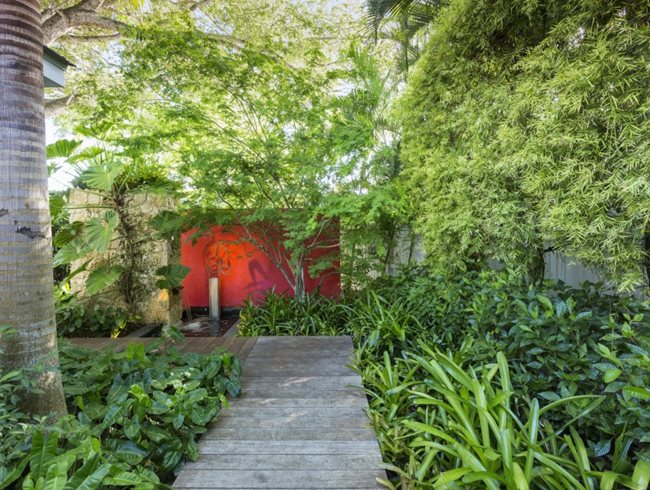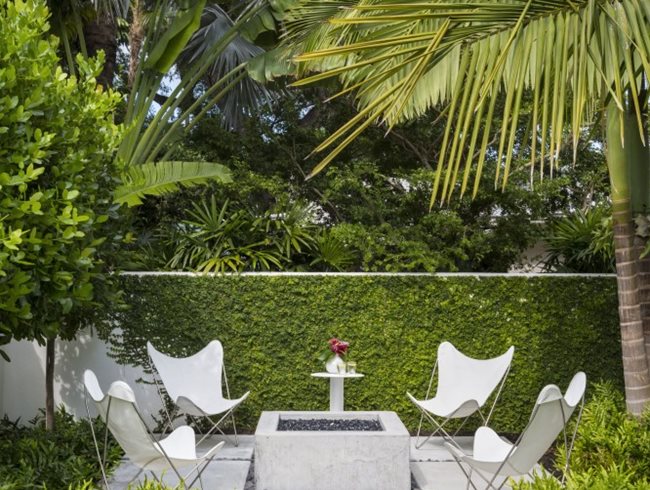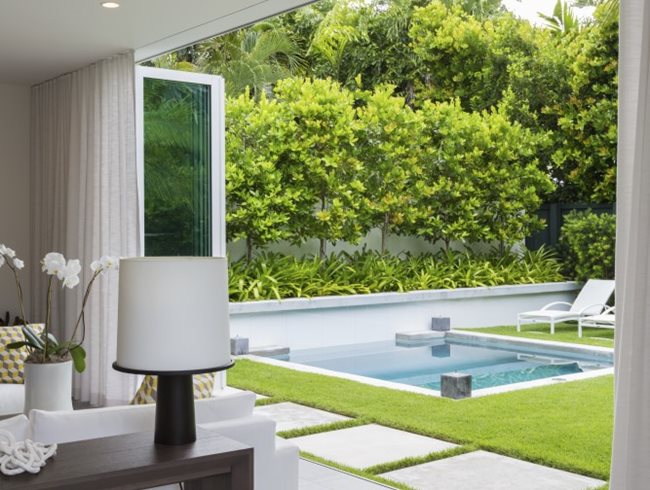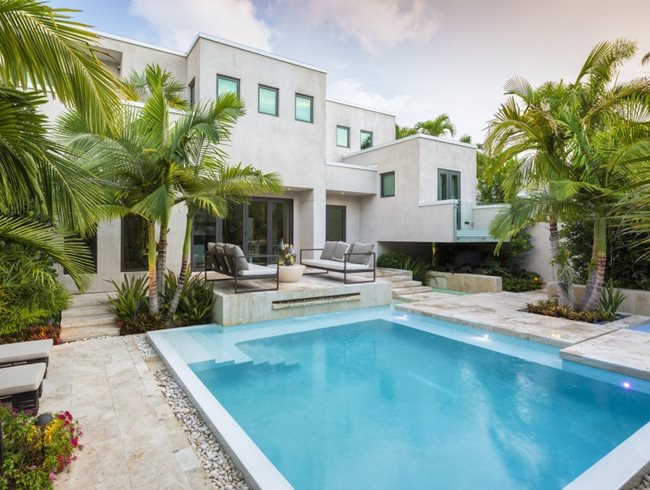8 Ways to Create a Garden That Feels Like Art
Craig Reynolds shares his tips for creating gardens that will make you feel like you're in a gorgeous piece of artworkMolding clay into ceramics may not seem like the most logical preparation for a career designing gardens. But Key West landscape architect Craig Reynolds, who studied ceramics in college, sees the connection. “Garden design is my clay,” he says of his process of imagining an outdoor space. “Every piece of land has a fingerprint, by which I mean proportion, scale, circulation. You just have to find it.”
Reynolds, who has projects throughout South Florida, the Florida Keys, and the Caribbean, approaches each project much as he would if he were painting a landscape. “I use native plants in the background as a framework, and in front I layer tropical-looking plants like philodendrons, palms, and variegated plants to bring in color,” he says. “I like gardens to feel sculptural and designed in a way that feels like artwork,” he says. Here are eight tips from Reynolds on creating a garden that feels like art.
No matter what size space you’re planting, “you need masses of things,” Reynolds says. “You may have five or six species of plants, and use maybe 10 of one, 20 of another, and 100 of the smaller groundcovers. Masses unify a textural, heavily planted garden.”

Massed bromeliads and Philodendron ‘Burle Marx’ fill either side of the ipe boardwalk with a sea of green. Dwarf Psychotria ligustrifolia and fernlike Podocarpus adds height and texture along the fence. Photo: Richard Bloom.
Small gardens gain a sense of depth when you accentuate long views across the garden. “Instead of making a design you meander through, take advantage of one long view,” Reynolds suggests. Emphasize its length with a straight path and dramatic focal points at each end.
“Natives are often the most resistant to pests and most durable once they get established,” Reynolds says. “And so the long-term health of the garden is going to be better if you use them. For clients who want a tropical look, I use natives in the background, and then I layer showier, tropical-style plants in front. The client gets what they want, and environmentally we’re doing as much as we can to use the right plants.”

Ficus repens greens up a white stucco wall, while a borrowed view of neighboring palms fosters the illusion that this garden continues beyond its quarter-acre boundary. “We used what was next door so that we didn’t have to plant on the inside of the wall,” Reynolds says. “This gave us a little more space for a patio.” Photo: Richard Bloom.
4. LIGHT IT, BUT DON'T LIGHT IT UP
"Lighting is a huge part of my designs,” Reynolds says. Eliminating hot spots—the glare of an exposed bulb—is the number one challenge, he says. “If you can get rid of hot spots, the lighting looks natural.” Focus, too, on highlighting features you want to accentuate and letting less important elements recede into darkness.
Proper proportion is key to a successful garden design, especially for patios and swimming pools, and they must relate well to the size of the house and other garden elements. For pools especially, Reynolds suggests, it’s better to err on the smaller side. Make it a design feature, not the dominant element. “When you look out, you want a sense of space,” not a yard jam-packed with wish-list items.

This home’s living room transforms into a covered porch when glass doors are unfolded, revealing a modestly-sized 14-by-14-foot swimming pool, a lawn, and privacy-providing greenery. Photo: Richard Bloom.
A small garden feels larger if it draws the eye up and over the boundary fence. Borrow a neighbor’s landscaping by framing a view of their trees and creating the illusion that your garden extends out past the property line. Or plant a few tall trees near your fence line. “A tall tree draws your eye up,” Reynolds says. “That makes a space feel bigger and the tree seems farther away, even if it’s planted at the edge of the property.”
Soften a patio and give a small garden a greater sense of depth by breaking up paving with planter spaces, and fill them with an airy tree rather than a shrub or bushy perennial. “What you want is to see through and beyond the plant,” Reynolds says. “If you put a bush there, for example, it would arrest your view, and the space would feel smaller. That’s why I like King Alexander palms: they have multiple trunks and get tall enough so you can see right through them.”

King Alexander palms underplanted with bromeliads break up the paving around the pool. On the left, masses of bold-textured plants including palms and Cyperus papyrus create a “woodland’s edge” sense of expansiveness. Photo: Richard Bloom.
8. A FOUNTAIN SHOULD LOOK GOOD, EVEN WHEN DRY
A fountain isn’t always on, especially if you’re trying to conserve water. Reynolds suggests making a fountain that looks just as good turned off as on—for example, a glass-tile water wall that still looks attractive, and a recessed spout that fades from prominence when the water’s turned off.

Join us for our next webinar!
Coming September 2025
Get more info & sign up to be notified when registration opens!
Related:
2021 Garden Trends
8 Landscape Design Rules
Garden-Inspired Art
